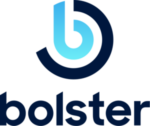Book Short: Awesome Title, So-So Book Strategy and the Fat Smoker (book, Kindle), by David Maister, was a book that had me completely riveted in the first few chapters, then completely lost me for the rest. That was a shame. It might be worth reading it just for the beginning, though I’m not sure I can wholeheartedly recommend the purchase just for that. The concept (as well as the title) is fantastic. As the author says in the first words of the introduction: We often (or even usually) know what we should be doing in both personal and professional life. We also know why we should be doing it and (often) how to do it. Figuring all that out is…
Tag
strategy
The Best Laid Plans, Part IV
The Best Laid Plans, IV I have had a bunch of good comments from readers about the three posts in this series about creating strategic plans (input phase, analysis phase, output phase). Many of them are leading me to write a fourth post in the series, one about how to make sure the result of the plan isn’t shelfware, but flawless execution. There’s a bit of middleware that has to happen between the completion of the strategic plan and the work getting done, and that is an operating plan. In my observation over the years, this is where most companies explode. They have good ideas and capable workers, just no cohesive way to organize and contextualize the work. There are…
The Best Laid Plans, Part III
The Best Laid Plans, Part III Once you’ve finished the Input Phase and the Analysis Phase of producing your strategic plan, you’re ready for the final Output Phase, which goes something like this: Vision articulation. Get it right for yourself first. You should be able to answer “where do we want to be in three years?” in 25 words or less. Roadmap from today. Make sure to lay out clearly what things need to happen to get from where you are today to where you want to be. The sooner-in stuff needs to be much clearer than the further out stuff. Resource Requirements. Identify the things you will need to get there, and the timing of those needs – More…
The Best Laid Plans, Part II
The Best Laid Plans, Part II Once you’ve finished the Input Phase (see last week’s post) of producing your strategic plan, you’re ready for the Analysis Phase, which goes something like this: Assemble the facts. Keep notes along the way on the input phase items, assemble them into a coherent document with key thoughts and common themes highlighted. Select/apply framework. Go back to the reading and come up with one or more strategic frameworks. Adapted them from the academic stuff to fit our situation. Academic frameworks don’t solve problems on their own, but they do force you to think through problems in a structured way. Step back. Leave everything alone for two weeks and try not to think about it. …
The Best Laid Plans, Part I
The Best Laid Plans, Part I One of my readers asked me if I have a formula that I use to develop strategic plans. While every year and every situation is different, I do have a general outline that I’ve followed that has been pretty successful over the years at Return Path. There are three phases — input, analysis, and output. I’ll break this up into three postings over the next three weeks. The Input Phase goes something like this: Conduct stakeholder interviews with a few top clients, resellers, suppliers; Board of directors; and junior staff roundtables. Formal interviews set up in advance, with questions given ahead. Goal for customers: find out their view of the business today, how we’re…
Should You Have a Board?
Should You Have a Board? As I mentioned last week, Fred’s post from a few months ago about an M&A Case study involving WhatCounts had a couple of provocative thoughts in it from CEO David Geller. The second one I wanted to address is whether or not you should have take on institutional investors and have a Board. As David said in the post: Fewer outsiders dictating (or strongly suggesting) direction means that you will be able to pursue your goals more closely and with less friction Although I have a lot of respect for David, I disagree with the notion that outsiders around the Board table is inherently bad for a business, or at least that the friction from…
What Does a CEO Do, Anyway?
What Does a CEO Do, Anyway? Fred has a great post up last week in his MBA Mondays series caled “What a CEO Does.” His three things (worth reading his whole post anyway) are set vision/strategy and communicate broadly, recruit/hire/retain top talent, and make sure there’s enough cash in the bank. It’s great advice. These three are core job responsibilities of any CEO, probably of any company, any size. I’d like to build on that premise by adding two other dimensions to the list. Fred was kind enough to offer me a “guest blogger” spot, so this post also appears today on his blog as well. First, three corollaries – one for each of the three responsibilities Fred outlines. Setting…



